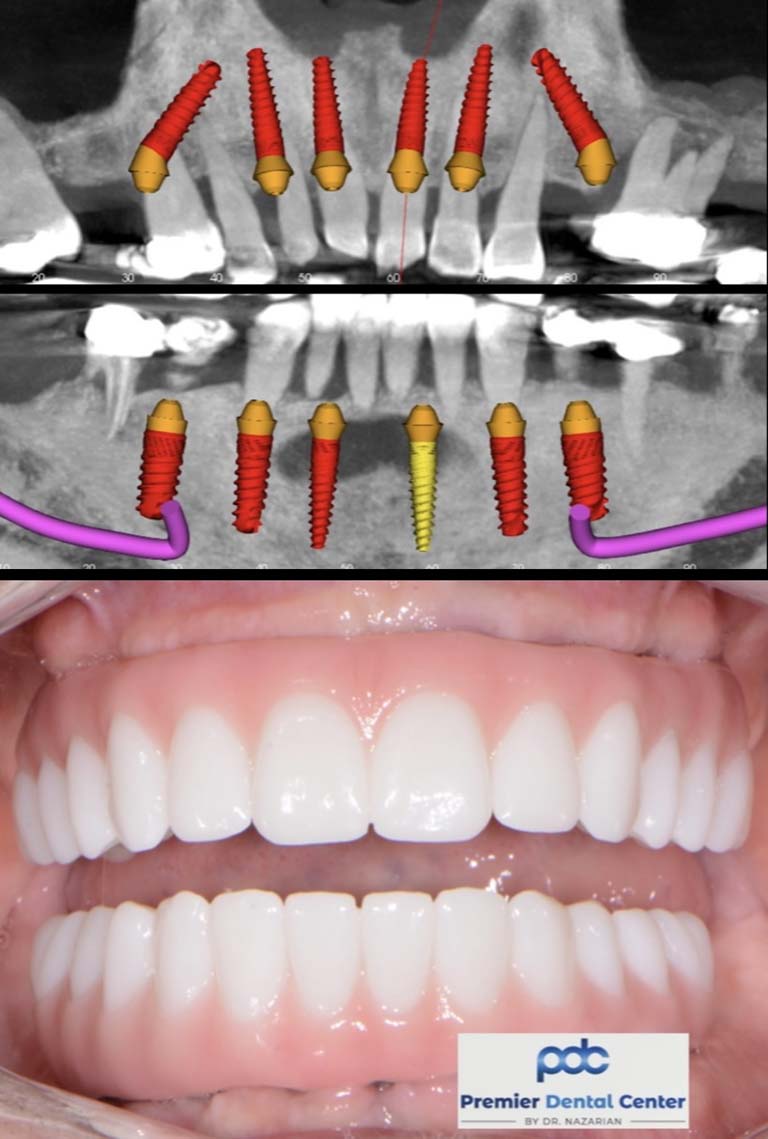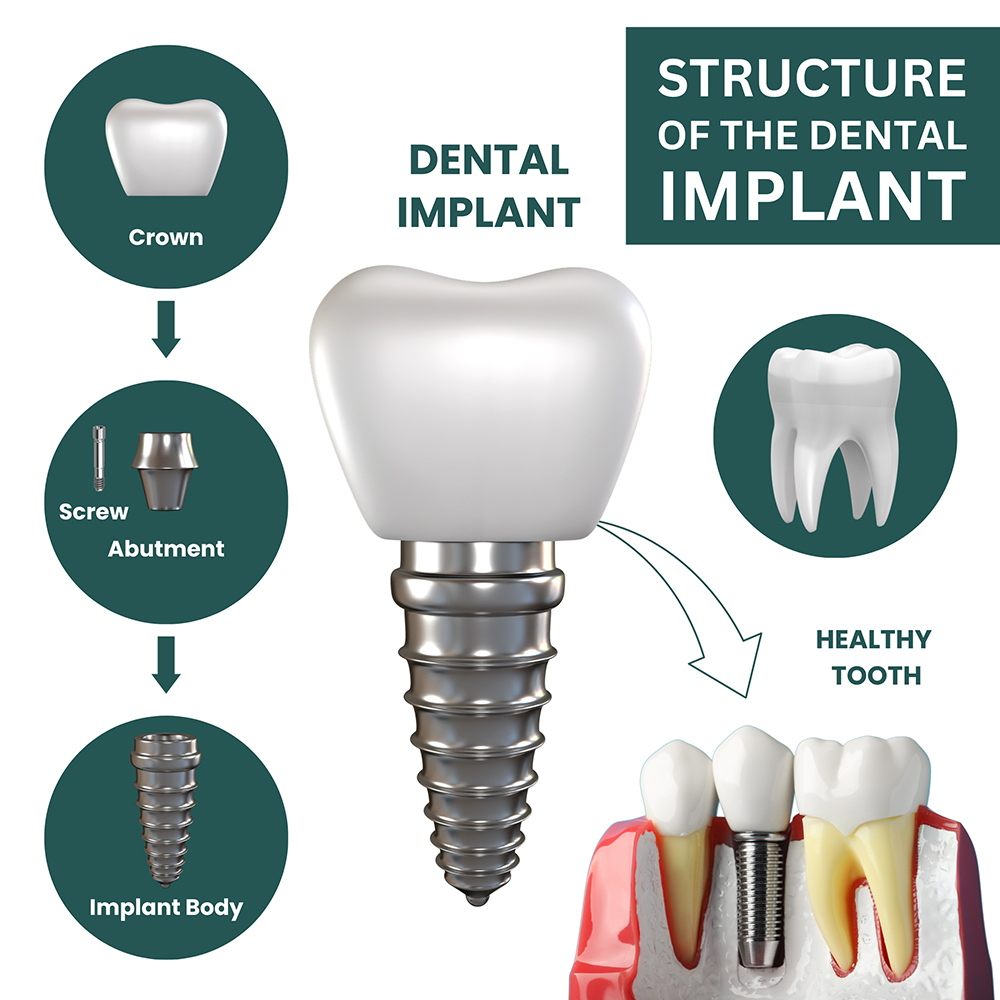8 Simple Techniques For Dental Sense
Table of ContentsDental Sense Can Be Fun For AnyoneThings about Dental SenseLittle Known Facts About Dental Sense.Not known Factual Statements About Dental Sense
are medical gadgets operatively implanted into the jaw to restore an individual's capacity to eat or their appearance. They supply assistance for fabricated (phony) teeth, such as crowns, bridges, or dentures. When a tooth is lost due to injury or disease, a person can experience issues such as fast bone loss, defective speech, or adjustments to eating patterns that cause pain.Oral implant systems are composed of a dental implant body and dental implant abutment and may likewise include an abutment fixation screw. Root canal procedure. The dental implant body is surgically inserted in the jawbone instead of the tooth's root. The oral implant joint is normally attached to the implant body by the joint fixation screw and expands via gums into the mouth to support the attached man-made teeth
(https://matthewmusic33101.wixsite.com/dental-sense/post/dental-veneers-cost-kids-dental-and-dental-implant-vs-bridge-what-you-need-to-know)Structure of The Oral Implant System picking oral implants, talk to your oral supplier concerning the potential benefits and threats, and whether you are a prospect for the procedure. Things to consider: Your total health and wellness is a crucial factor in figuring out whether you are an excellent candidate for oral implants, the length of time it will certainly take to recover, and exactly how long the implant might remain in place.
Smoking cigarettes might influence the recovery process and decrease the lasting success of the implant. The recovery process for the dental implant body may take several months or longer, throughout which time you typically have a momentary abutment in place of the tooth. the oral implant procedure: Meticulously follow the dental health guidelines provided to you by your oral copyright.
Dental Sense - The Facts
Implant failure can result in the need for one more operation to fix or replace the implant system. Recovers the capacity to chew Brings back cosmetic look Assists keep the jawbone from diminishing due to bone loss Maintains the wellness of the surrounding bone and gums Aids keep surrounding (close-by) teeth stable Improves quality of life Damages to bordering natural teeth during implant positioning Injury to the surrounding cells during surgical treatment, such as sinus perforation Injury throughout surgical treatment (as an example, fracture of bordering jawbone) Inadequate function, such as really feeling like the teeth do not bite together usually A sensation that the tooth is loose or turning in place resulting from a joint screw loosening up Implant body failing (looseness of the dental implant body) due to systemic infection, which may be much more most likely in patients with uncontrolled diabetes because of neighborhood infection in bone and gum tissues supporting the implant body as a result of postponed healing, which may be most likely in people that smoke Problem cleaning the gums around the dental implant, resulting in inadequate dental health Untreated gum illness Post-surgical pins and needles due to nerve impingement or damages Always alert healthcare providers and imaging service technicians that you have dental implants prior to any Homepage type of magnetic resonance imaging (MRI) or x-ray procedures.
FDA is not conscious of any kind of adverse occasions reported for MRI or x-ray procedures with oral implants. Dental implants systems are usually constructed from products that comply with global consensus standards of the International Company for Standardization (ISO) or ASTM International. These standards have information of what makes a secure material.

An oral implant is a structure that replaces a missing out on tooth. With screw-like devices, the doctor inserts a dental implant into the jawbone, and it functions as a support for a synthetic tooth, called a crown. A gadget called a joint attaches the artificial tooth to the dental implant. The crown is custom-made to fit the person's mouth and match the color of their teeth.
Getting The Dental Sense To Work
Some people are not qualified for dental implant surgical procedure. It is for oral specialists to operate on individuals with: intense illnessuncontrollable metabolic diseasebone or soft cells condition or infectionIf these issues are resolved, an individual can have the surgery. In, dental surgeons abstain from operating individuals with: If people with any of the above undergo oral implant surgical treatment, there is a greater risk of the implant falling short.

Dental implant surgical treatment is a personalized procedure. Give you time to recover. Affix the message and last crown, bridge or denture.
Next, your cosmetic surgeon will thoroughly put the oral implant into your jaw. If your implant is near the front of your mouth, your dental professional will make a temporary tooth for you to put on until you heal.
An Unbiased View of Dental Sense
Your supplier can inform you what to expect in your scenario. Throughout the healing phase, your jawbone needs to fuse to the oral implant. This process, called osseointegration, is crucial for stability and long-term success. This procedure can take anywhere from 3 to nine months. In some cases, it may take much longer.
Once your implant heals, your dental professional can connect the abutment (little adapter article) and your last remediation (crown, bridge or denture). This normally takes about one hour to finish and might call for a second small surgical treatment. You shouldn't feel any kind of discomfort during your dental implant treatment due to the fact that your service provider will use medicine to numb your gum tissues.